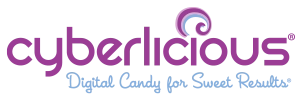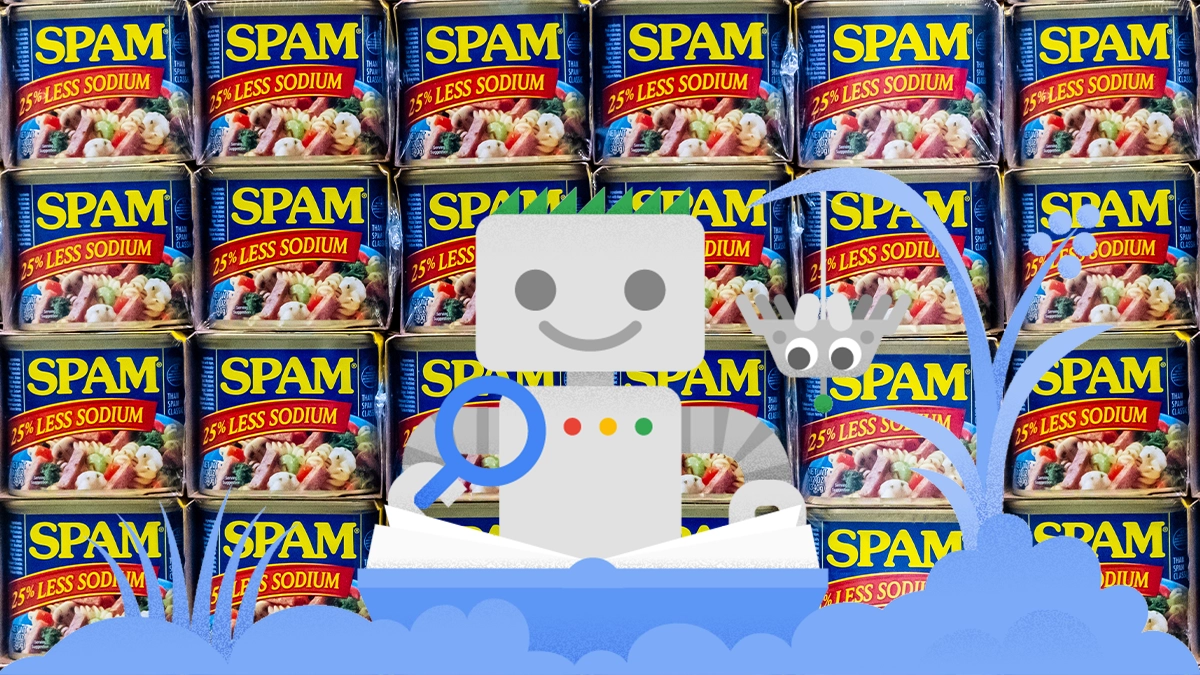The Google Spam Update October 2022 was a major update starting a few days ago on October 19th. It was sent out to improve Google’s spam algorithms completing on October 21st. Was this announcement regarding Google Search Essentials and an update to its spam policies a warning shot? It might have been, but let us dig deeper into what Google improved.
What’s in the Google Spam Update October 2022?
Even though Google’s automated systems are continuously detecting spam, they do make occasional improvements to how they function. For instance, they may have simply sent out an update for their AI-based system called SpamBrain. When they rollout an update like this one, they make a release note in the List of Ranking Updates where it is publicly available. A spam update is just one particular update as Google issues thousands of updates per year.
How Google Search Updates Affect Websites
If your website was hit by the spam update, or any Google update, you will either see a positive or a negative affect. You may see an increase in Google organic traffic or you may see a decrease. We have seen plenty of manual actions and algorithmic penalties through the years, and each one affects websites differently.
St. Petersburg Chamber Membership Directory Link Spam
Ironically, as I am reviewing our own backlink audit report for SEO, I noticed we received two toxic backlinks. Then a few of our clients began to have the same links pop up in their backlink reports. This all started happening on October 23rd just two days after the spam update.

While analyzing this issue further, I discovered it was our very own St. Pete Chamber of Commerce with a Toxicity Score (TS) of 60. This may be a sign of SpamBrain enhancing its ability to identify paid membership websites.
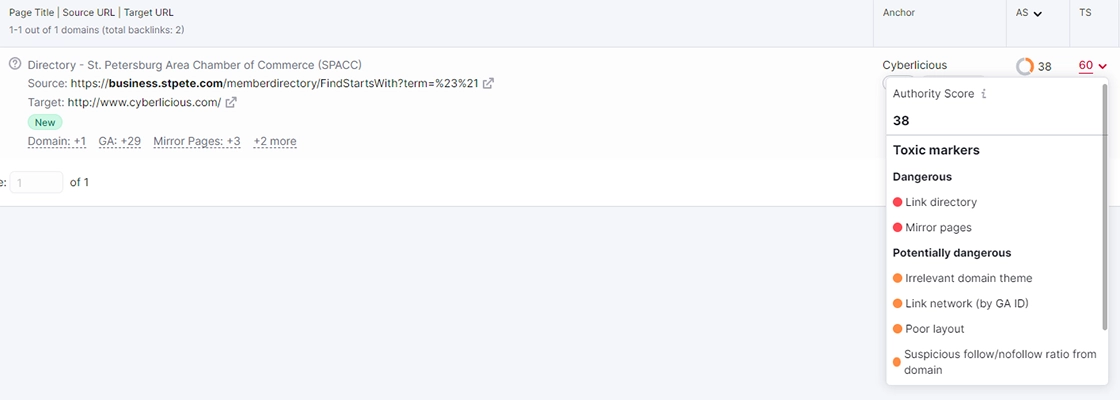
Membership Directory or Paid Link Spam?
As you can see, their website is showing as “Dangerous” for a couple of things. First, their Membership Directory which is indeed a link directory full of paid links and is defined by Google as Link Spam. We emailed their marketing team, and suggested they qualify their outbound links to Google. Websites must mark their advertisements or paid placements, i.e., paid links, with the sponsored value:
rel="sponsored"From what I could tell, the links on their website are currently passing link juice:
<a target="_blank" href=https://www.cyberlicious.com/ alt="Cyberlicious" itemprop="url">Cyberlicious</a>Once they add some advanced SEO sprinkles to those links, it should look like this instead:
<a rel="sponsored" target="_blank" href=https://www.cyberlicious.com/ alt="Cyberlicious" itemprop="url">Cyberlicious</a>Mirror Pages AKA Duplicate Content
The other “Dangerous” issue with the Chamber’s website are the Mirror Pages. They create what is called duplicate content when text, images, or even video on one page is a mirror copy of another page. When we conduct conversion rate optimization (CRO) to test similar pages, we have to account for those as well. We have to use what is called canonicalization or a canonical URL to consolidate mirror pages by using this value:
rel="canonical"Not to be confused with the sponsored tag used for link spam above, the canonical tag is placed in the header of the page unseen by humans. Add a <link> tag to all mirror, or duplicate pages pointing to the canonical page, i.e., the page you want Google to rank.
<link rel="canonical" href="https://www.cyberlicious.com/marketing-services/seo-services/" />Remember, you only apply this tag once within the header of a web page for all your duplicate pages. For example, our website has similar pages regarding our SEO Services, and we only want one of those pages to rank for the search term “seo services.” To do this, we simply apply this <link> tag to all those similar pages.
<head>
<link rel="canonical" href="https://www.cyberlicious.com/marketing-services/seo-services/" />
</head>This tells Google we know about the duplicate content, and are not trying to manipulate its ranking algorithms. It is also specifying which page we want to rank for SEO Services while the other pages can stay in the wild without competing against one another AKA keyword cannibalization.
Google Search Penalty Recovery
Unfortunately, we are not quite sure what the total impact is to the Chamber or to its paying members. We do not know if they need to recover from anything. However, for another client that requested help from a negative impact, our SEO recovery efforts did break organic traffic records for the year. You may view those below.
Google Search Penalty Day 1 Recovery
The first day of their SEO recovery from a Google penalty, they saw 355 organic sessions or visits. This set an organic traffic record for the year:
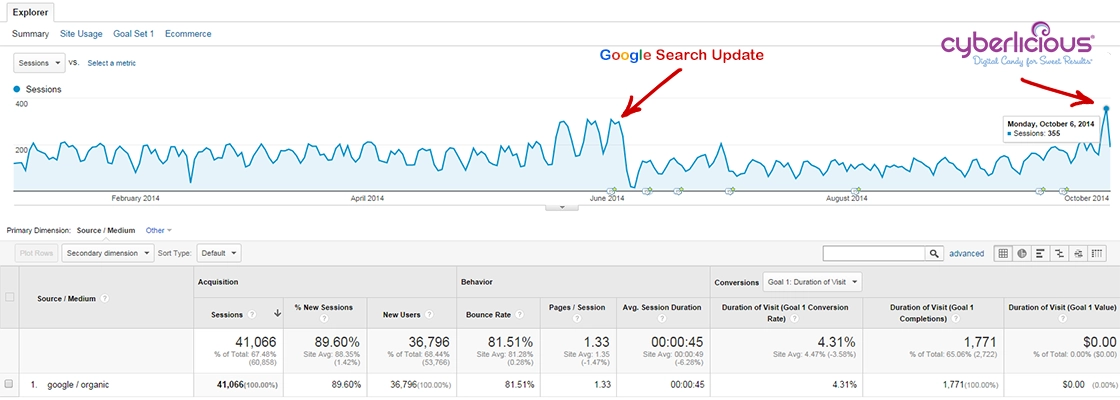
Google Search Penalty Day 2 Recovery
On the second day, we broke the previous day’s record with 414 sessions:
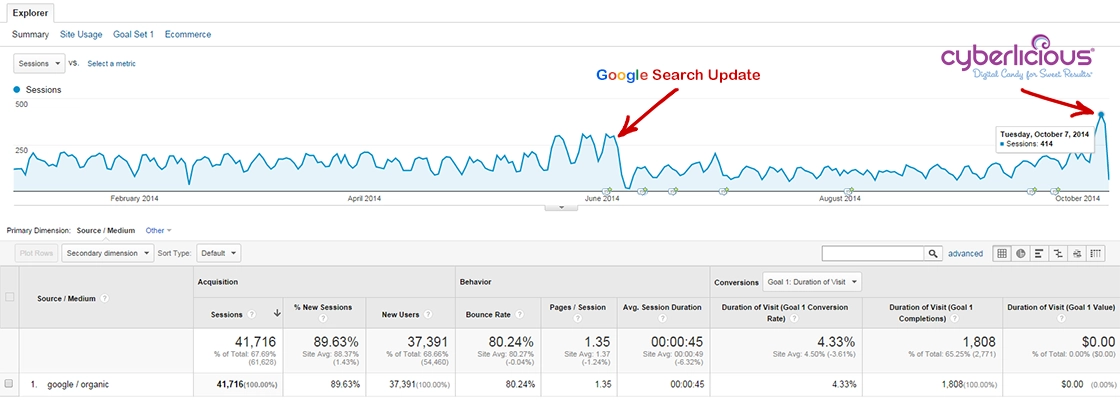
Help to Recover from Google Spam Update October 2022
The good news is most negative impacts are recoverable as shown above. The bad news is most websites lose revenue because of it. If your website was harmed by Google Spam Update October 2022, schedule a consultation with our SEO team. We will generate a plan to try to bring your website back to good health.
Join the Google Spam Update Conversation
Join the discussion on LinkedIn:
